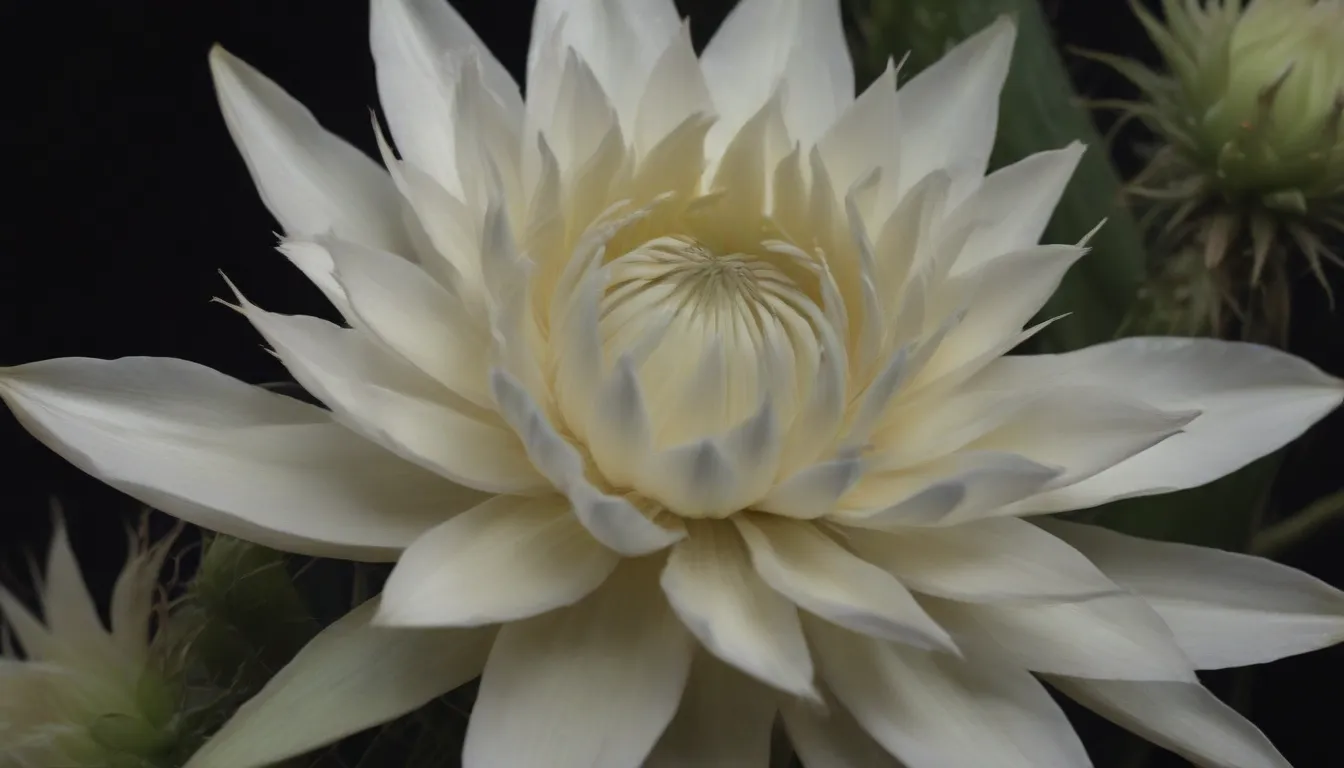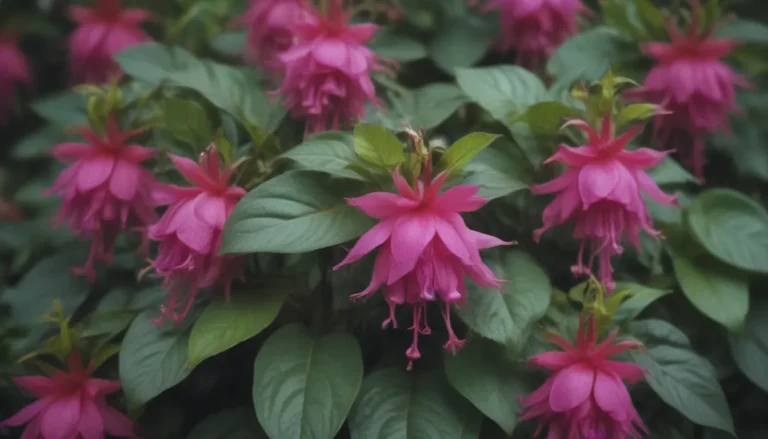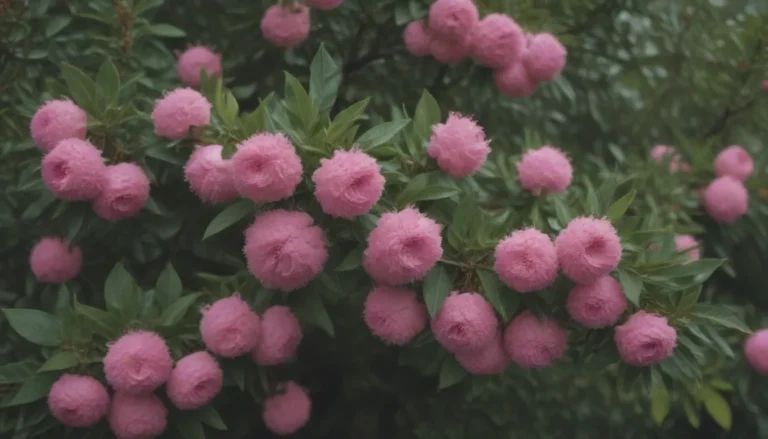The Beauty of Night Blooming Cereus: A Guide to 10 Spectacular Varieties

Night blooming cereus is a mesmerizing plant that adds a touch of magic to any garden. These unique plants bloom only at night, usually for just one night, creating a spectacle that is truly unforgettable. The term “cereus” refers to the fact that these plants belong to the cactus family, and many of them are known for their fragrant blooms. While the most well-known variety is the queen of the night (Epiphyllum oxypetalum), there are actually at least 10 different types of night blooming cereus that are equally stunning.
Understanding Night Blooming Cereus
Night blooming cereus plants are tropical in nature, making them ideal for indoor cultivation in colder regions. They typically have white flowers or light pastel shades, adding a touch of elegance to any space. One of the most appealing factors of these plants is their simplicity when it comes to care. They require minimal maintenance, needing just some light, water, and cactus fertilizer to thrive. However, it’s important to note that they do not do well in shady conditions and can grow quite tall indoors, reaching up to 10 feet in height.
The Magic of the Night: 10 Types of Night Blooming Cereus
- Queen of the Night Cactus (Epiphyllum oxypetalum)
- USDA Growing Zones:
- Color Varieties:
- Sun Exposure:
- Soil Needs:
The queen of the night cactus, also known as “Dutchman’s pipe,” is a popular variety of night blooming cereus that is loved for its exquisite blooms. Native to rainforests, this plant requires more frequent watering than other cacti due to its origins. It’s important to feed it with cactus fertilizer regularly to ensure healthy growth. Interestingly, the more root-bound this plant is, the more likely it is to flower, so don’t be afraid to let it get a little cozy in its pot.
- Red Orchid Cactus (Epiphyllum ‘Fifty Grand’)
- USDA Growing Zones:
- Color Varieties:
- Sun Exposure:
- Soil Needs:
The ‘Fifty Grand’ cultivar of the orchid cactus family is known for its deep rosy-pink flowers that can reach up to 8 inches in size. Perfect for hanging baskets, this hybrid plant requires the same care as the queen of the night cactus, making it a low-maintenance yet high-impact addition to any garden.
- Pink Orchid Cactus (Epiphyllum ‘Thousand Pinks’)
- USDA Growing Zones:
- Color Varieties:
- Sun Exposure:
- Soil Needs:
The ‘Thousand Pinks’ hybrid cultivar of the orchid cactus family is a delightful variety that bears stunning pink flowers. Originating in the wild where it grows on trees, this plant requires less soil and nutrients to thrive, making it ideal for those who prefer a low-maintenance gardening experience.
- Hooker’s Orchid Cactus (Epiphyllum hookeri)
- USDA Growing Zones:
- Color Varieties:
- Sun Exposure:
- Soil Needs:
Named after its narrow petals, the Hooker’s Orchid Cactus is a charming variety that requires the same care as its counterparts. Despite its less fragrant blooms, this plant is a beautiful addition to any collection of night blooming cereus plants.
- Dragon Fruit Cactus (Hylocereus undatus)
- USDA Growing Zones:
- Color Varieties:
- Sun Exposure:
- Soil Needs:
The Dragon Fruit Cactus is a striking variety of night blooming cereus that is known for its large flowers and neon-pink edible fruits. Requiring more water in hot weather, this plant can grow up to 10 feet tall and needs support for its heavy fruit production.
- Deer Horn Cactus (Peniocereus greggii)
- USDA Growing Zones:
- Color Varieties:
- Sun Exposure:
- Soil Needs:
The Deer Horn Cactus is a majestic variety of night blooming cereus that can reach up to 10 feet in height in the wild. With minimal watering requirements, this plant is perfect for those looking for a low-maintenance yet visually striking addition to their garden.
- Vanilla Cactus (Selenicereus grandiflorus)
- USDA Growing Zones:
- Color Varieties:
- Sun Exposure:
- Soil Needs:
The Vanilla Cactus is a unique variety that can tolerate more shade than other cacti. With regular watering and care, this plant can reach a height of 1 to 2 feet, adding a touch of elegance to any indoor or outdoor space.
- San Pedro Cactus (Echinopsis pachanoi)
- USDA Growing Zones:
- Color Varieties:
- Sun Exposure:
- Soil Needs:
The San Pedro Cactus is a versatile plant that can grow up to 20 feet tall outdoors. With less watering requirements than other types of night blooming cereus, this plant is perfect for those looking for a low-maintenance yet visually striking addition to their garden.
- Cardeiro (Cereus jamacaru)
- USDA Growing Zones:
- Color Varieties:
- Sun Exposure:
- Soil Needs:
Cardeiro is a type of night blooming cereus that is native to Brazil. With minimal water requirements, this plant can grow up to 20 feet tall in the wild and bears tasty pinkish-red fruits, making it a delightful addition to any garden.
- Peruvian Apple Cactus (Cereus peruvianus)
- USDA Growing Zones:
- Color Varieties:
- Sun Exposure:
- Soil Needs:
The Peruvian Apple Cactus is another stunning variety of night blooming cereus that bears edible fruits. With proper care, this plant can grow up to 30 feet tall in the wild, making it a truly impressive addition to any garden.
Night blooming cereus plants are a beautiful addition to any garden, bringing a touch of elegance and magic to your outdoor space. While their blooms may be short-lived, the beauty they bring is truly unforgettable. Whether you choose the queen of the night cactus or one of the other stunning varieties listed above, you’re sure to be enchanted by the spectacle they create in the darkness of night. Explore the world of night blooming cereus and create your very own moonlit oasis today.





